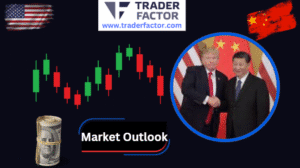Bitcoin has seen remarkable growth post-election, with its value recently crossing the $93,000 mark, a historic high. This surge can be traced back to a series of significant events. Initially traded below $70,000 on the night of the U.S. election, Bitcoin’s price more than doubled within 2024, boosted by the introduction of spot bitcoin exchange-traded funds (ETFs) in January.
The announcement of Donald Trump’s presidential win has sparked optimism, especially as he pledged to establish a “strategic Bitcoin stockpile” and foster growth in the U.S. crypto-mining sector. Consequently, this political shift has been a catalyst for the two largest inflow days into Bitcoin ETFs on record, with nearly $2 billion pouring in over a single Monday and Tuesday.
Institutional Investment and ETF Impact
Institutional inflows, particularly into BlackRock’s iShares Bitcoin Trust (IBIT), have been a driving force behind Bitcoin’s recent price escalation. IBIT has surpassed the $40 billion mark in inflows, setting a new record for any ETF launch in the past decade. The trust’s rapid growth even outpaced BlackRock’s iShares Gold Trust (IAU).
Activity has also begun to rise in recently approved spot ether ETFs, indicating growing interest in the broader cryptocurrency market. However, Bitcoin’s price did see a minor setback, retreating from its record highs of $93,226.6, as initial enthusiasm over Trump’s presidency cooled, amid heightened interest rate uncertainty.
Macro-Economic Factors Affecting Bitcoin
Besides political influences, macroeconomic factors such as interest rates and inflation play a crucial role in Bitcoin’s valuation. Recent strong readings for consumer and producer inflation have stirred concerns, leading to speculation about potential interest rate hikes. Comments from Federal Reserve Chair Jerome Powell, emphasizing economic resilience, have also added to the uncertainty, causing Bitcoin’s recent rally to stall.
Bitcoin’s Weekly Performance
Despite these fluctuations, Bitcoin is set for an impressive weekly performance, with a 14% increase, marking its best week since February. The ongoing optimism around crypto-friendly regulations under Trump and robust institutional investments into crypto ETFs remain significant drivers of Bitcoin’s gains.
Bitcoin Price Projections and Indicators
Bitcoin’s future trajectory towards the $100K threshold depends on several indicators. Key among these are regulatory developments, technological advancements in the crypto sphere, and ongoing macroeconomic trends. For instance, Trump’s proposed crypto-friendly policies and the possibility of a national Bitcoin reserve could enhance investor confidence.
Market Sentiment and Investment Behavior
On-chain metrics and trading volumes remain essential indicators of market sentiment. An uptick in stablecoin supply suggests that fresh capital is entering the market, potentially propelling Bitcoin closer to the coveted $100K level. However, achieving this milestone will also require sustained demand from both institutional and retail investors.
Conclusion
With promising technological developments and potential regulatory support on the horizon, the possibility of Bitcoin reaching $100K remains within reach. Yet, investors should remain vigilant, monitoring macroeconomic trends and investor sentiment closely to inform their strategies.
Disclaimer:
All information has been prepared by TraderFactor or partners. The information does not contain a record of TraderFactor or partner’s prices or an offer of or solicitation for a transaction in any financial instrument. No representation or warranty is given as to the accuracy or completeness of this information. Any material provided does not have regard to the specific investment objective and financial situation of any person who may read it. Past performance is not a reliable indicator of future performance.

















